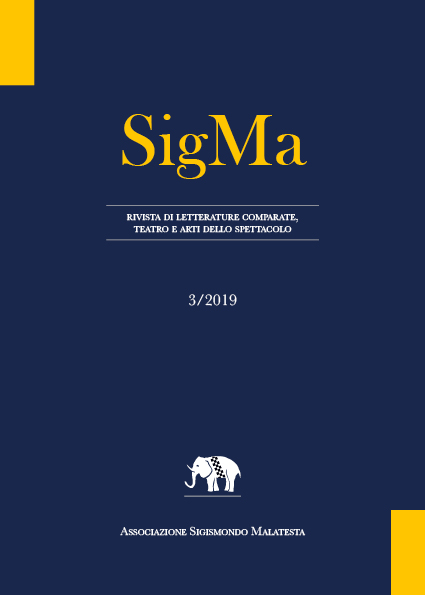Il comico e il patetico
Abstract
L’articolo parte da alcuni richiami alla tradizione di pensiero che, da Aristotele a Bergson, ha insistito sulla cauterizzazione emotiva in quanto condizione necessaria per l’innesco del riso e ha privilegiato il senso di autocompiacimento e di superiorità dell’io rispetto alla vittima comica. L’articolo procede quindi a un tentativo di storicizzazione della relazione tra soggetto e oggetto del riso con particolare riferimento al mito cristiano il quale, ponendo al proprio centro la compassione per una figura umiliata e dolente (potenzialmente ridicola, secondo la visione antica), sconvolge le relazioni tra comico e serio e introduce il fattore dell’identificazione patetica quale elemento che pervade il comico. È in funzione d’una tale ‘contaminazione’ – è la conclusione – che alcuni risvolti ambivalenti della comicità risultano enfatizzati nella riflessione e nella letteratura moderne.
Downloads
SigMa pubblica in internet, ad accesso aperto, con licenza:
|
|
CCPL Creative Commons Attribuzione |
L'autore conserva il copyright sul suo contributo, consentendo tuttavia a chiunque "di riprodurre, distribuire, comunicare al pubblico, esporre in pubblico, rappresentare, eseguire e recitare l'opera", purché siano correttamente citati l'autore e il titolo della rivista. L’autore, al momento della proposta di pubblicazione, è inoltre tenuto a dichiarare che il contenuto e l’organizzazione dell’opera è originale e non compromette in alcun modo i diritti di terzi, né gli obblighi connessi alla salvaguardia di diritti morali ed economici di altri autori o di altri aventi diritto, sia per testi, immagini, foto, tabelle, sia per altre parti di cui il contributo può essere composto. L’autore dichiara altresì di essere a conoscenza delle sanzioni previste dal codice penale e dalle leggi speciali per l’ipotesi di falsità in atti ed uso di atti falsi, e che pertanto Reti Medievali è esente da qualsiasi responsabilità di qualsivoglia natura, civile, amministrativa o penale, e sarà dall'autore tenuta indenne da qualsiasi richiesta o rivendicazione da parte di terzi.

